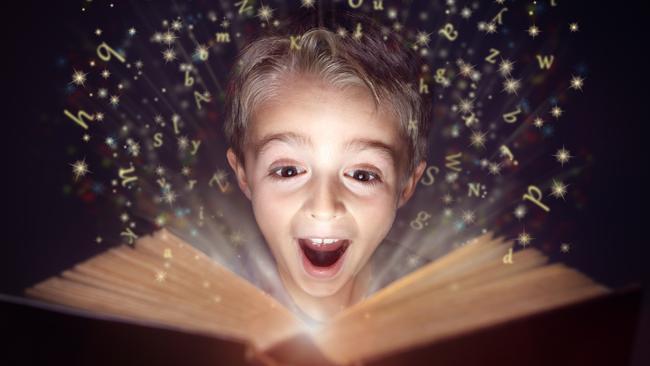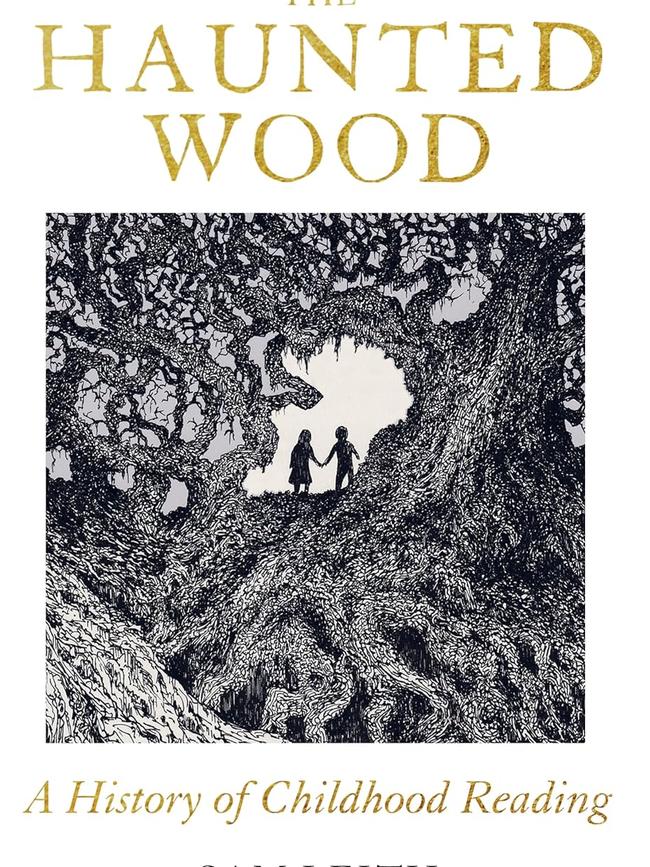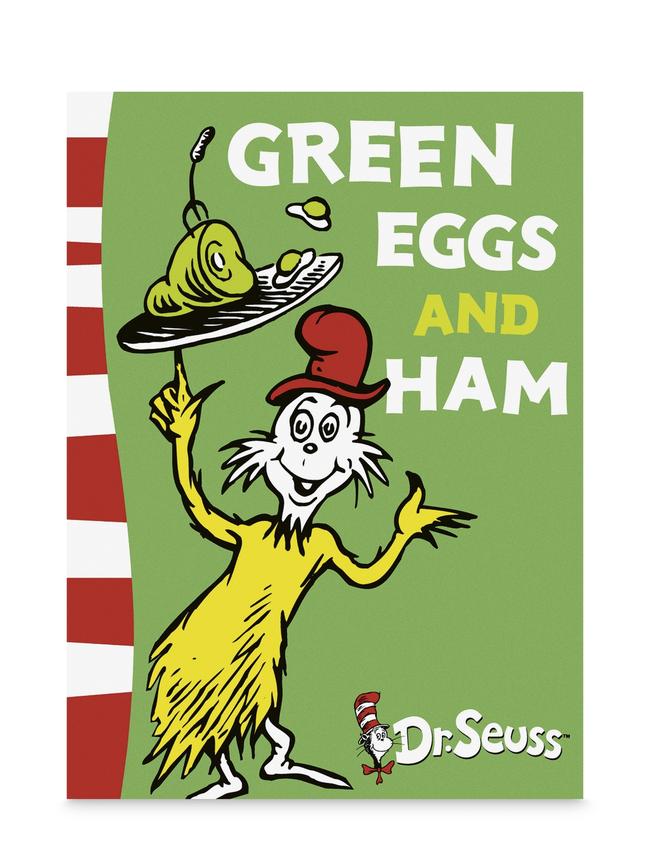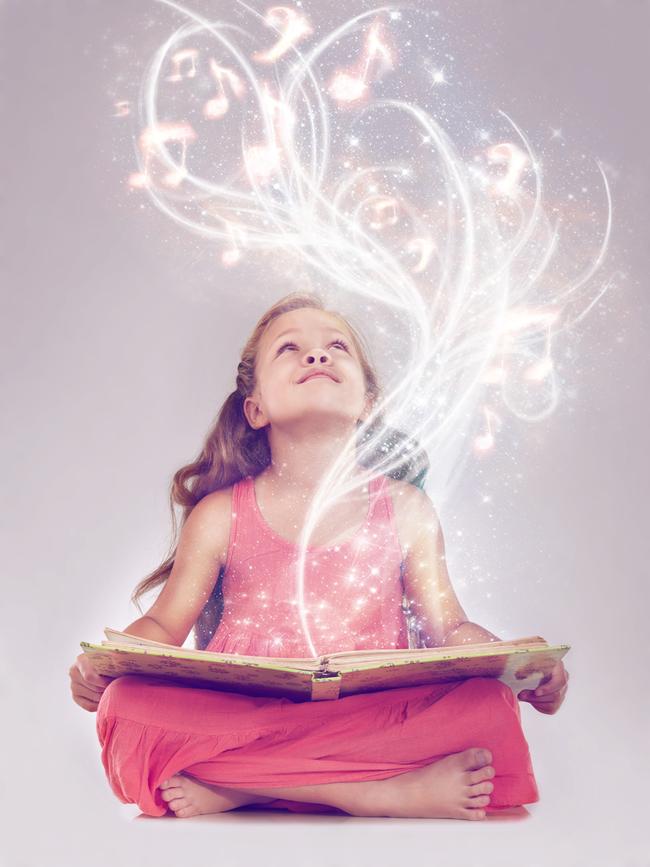Do we still need to read to our kids?
The Lord of the Rings was such an overwhelming experience, in my late childhood and early adolescence, that rather than plunging me into a passion for fantasy, it set me off on a quest to understand our Earth and its history and poetry.

What books, read to you in childhood, or indeed by you before you hit adolescence, left the deepest impression? Which tales did the most to bring to life your capacity to imagine alterities – other realities, possibilities, ways of seeing?
When I was a child, my mother gave me some excellent books to read. The ones that made the deepest impression were Ladybird history books: Stone Age Man in Britain, Alfred the Great, William the Conqueror, Henry V, James Cook and Florence Nightingale.
You’ll notice that they were all about Britain, where they were published, not about Australia. There was one about Marco Polo, though. My mother also gave me many How and Why books, covering all sorts of scientific subjects. And, as soon as I started requesting them, works of adult history – notably Isaac Deutscher’s Stalin, for my twelfth birthday.
But the year that children’s fiction went into orbit for me was 1967, fifth grade. Our teacher read to us The Wind in the Willows, five of C.S. Lewis’s Narnia books, as well as The Hobbit and The Lord of the Rings.
A couple of years later, in year 7, I played Toad in a stage production of A. A. Milne’s Toad of Toad Hall and sang with gusto.

That personal background impelled me to grab The Haunted Wood by Sam Leith as soon as I saw it and read it with fascination. He plumbs the evolution of children’s literature over the past 300 years in his quest for answers about the books that make the strongest impression on youngsters – not your answers, of course, but generic answers; what might be called a theory of answers.
The work he has put into this weighty tome is breathtaking. He has read an extraordinary number of works of imaginative fiction, as well as books about them, books about their authors and books about the very nature of storytelling and reading, social history and the very idea of childhood.
He could, of course, have done that and then produced a dense and forbidding piece of work. But he has the lightest touch and communicates in the most lucid and engaging prose. As an eye-opener and a heart-opener, The Haunted Wood can hardly be recommended highly enough.
Leith explores terrain that had long been visible to me, but from a distance. He gave a depth of understanding to my own experience, and he will do the same for you, whether your founding fictions overlap with mine or are different entirely.
The book has a Prologue and an Epilogue. In between, it is divided into 12 parts (denominated with upper case Roman numerals), subdivided into 37 chapters. The Prologue is titled “Just So”, the Epilogue “This Lovely World, These Precious Days”. Along the way, he investigates the moral evolution of fairy tales.
Leith’s discussions of Lewis Carroll, A.A. Milne, Theodor Geisel (Dr Seuss), C.S. Lewis, Kenneth Grahame, Enid Blyton, Rudyard Kipling, T.H. White, Roald Dahl, Beatrix Potter, Anna Sewell, J.K. Rowling, Richard Adams, Philip Pullman and many other more or less celebrated authors are rich, tender, wry and exquisitely calibrated. Again and again, one discovers that the delightful fictions we have been gifted by these authors very often sprang from wounded and haunted psyches.
I confess that the first thing I did when I picked up the book was go to the Index to look under “Tolkien, J.R.R”. I was a little disappointed to discover that Leith chose not to explore The Lord of the Rings, on the grounds that it is “more likely to be found on the student than on the nursery bookshelf”. Nonetheless, he singles it out as a masterpiece which “did more than any other single book to create the magical fantasy genre as it now stands”.
The Lord of the Rings was such an overwhelming experience, in my late childhood and early adolescence, that rather than plunging me into a passion for fantasy, it set me off on a quest to understand our Earth and its history and poetry as richly as Tolkien had shown me Middle-earth. I wanted to be Elrond. I never went back to fantasy.


But I read The Lord of the Rings to children in my own family, before they were even 10 years old, and it made an indelible impression – just before the Harry Potter books started appearing. Now, reading Sam Leith’s wonderful study of the genre, I have come to realise that I missed a great deal in becoming so “secular” and serious when so very young.
The Haunted Wood is a liberating text. For the human and natural world are both more daunting and more astounding than ever before and we must cultivate in young (and not so young) minds a capacity to re-imagine things, to think with wonder and dread and magic. Leith’s book shows, also, much of the challenge childhood presents and the need of human beings for emotional refuge and solace.
In some ways, the life and mind of James Matthew Barrie (1860-1937), who gave us Peter Pan and Wendy, is something of a touchstone for Leith. His exploration of the story, its popular sentimentalisation by Walt Disney, its intricacies of meaning and the rather sad life of its author are all alike masterly.
The Haunted Wood, like so many books Leith reflects upon within it, is a treasure.
Paul Monk is the author of a dozen books, including Sonnets to a Promiscuous Beauty (2006), Credo and Twelve Poems (2014), The Secret Gospel According to Mark (2018) and The Three Graces: Companionship, Discretion, Passion (2022).







To join the conversation, please log in. Don't have an account? Register
Join the conversation, you are commenting as Logout